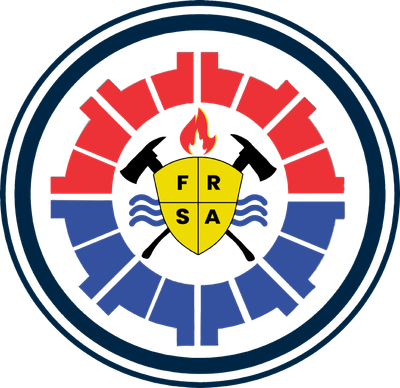Flammable Liquid Stores

Flammable stores
Insurer Requirements:
Flammable Liquids in excess of those amounts in Table 1 are to be stored in an approved Flammable Liquids store.
Definitions of Classes
"flammable liquid" means a liquid, or mixtures of liquids, or a liquid containing solids in solution or in
suspension that give off a flammable vapour at or below 60,5 °C and also includes a liquid within the following danger groups as determined in SANS 10228:—
Danger Group Based on Flammability | Danger Group Closed Cup Flash Point (°) | Initial Boiling Point(°C) |
1 | 2 | 3 |
i | -— | ≤ 35 (°C) |
ii | < 23 (°C) | > 35 (°C) |
iii | ≥ 23 ≤ 60,5 (°C) | > 35 (°C) |
iv | > 60,5 - 100 (°C) | > 35 (°C) |
Standards as per Bylaws:
The construction of a flammable store must be in accordance with the National Building Regulations (T1) read in conjunction with SANS 10400.
The floor must be of concrete construction or other impermeable material and must be recessed below the door level or incorporate a sill.
The recess or sill must be of such a depth or height that in the case of spillage it will be capable of
containing the quantity of flammable liquid, as indicated on the flammable substance certificate and an
additional 10% of the quantity mentioned on the certificate.
Notwithstanding the National Building Regulations (T1) read in conjunction with SANS 10400:—
the roof assembly of a flammable store must be constructed of a concrete slab capable of providing
a two-hour fire resistance when it forms part of another building;
the ventilation of a flammable store must be achieved by the use of air bricks located in the external
walls at the ratio of one air brick nominally above the sill level and one air brick located in the top
third of the wall per 5 m2 of wall area or part thereof, so that vapour cannot accumulate inside the
store;
the air bricks must be covered both internally and externally with closely-woven, non-corrodible
wire gauze of at least 1 100 meshes per metre, and
the wire gauze must be held in position by metal straps, a metal frame or cement.
When required by the controlling authority, the flammable store must be ventilated by a mechanical
ventilation system approved by the Municipality and must comply with the following requirements:—
the ventilation system is to be intrinsically safe, provide 30 air changes per hour and must operate
continuously;
the fan extraction point must be nominally above sill level and must discharge through a vertical
metal duct terminating at least 1 metre above roof height or at least 3,6 metres above ground level,
whichever is the greater;
ducting material that is external to the store, but communicates with the remainder of the building,
must be fitted with a fire damper of two-hour fire resistance at the point of exit from a flammable
store, and
the ducting must be as short as possible and must not have sharp bends.
Notwithstanding the National Building Regulations (T1) read in conjunction with SANS 10400, the
controlling authority may allow a flammable store door to be constructed of non-combustible material,
provided that it is outward opening and that all relevant safety distances are complied with.
When required by the controlling authority, a flammable store door must be a D-class fire door, which
complies with SANS 11253.
Notwithstanding the National Building Regulations (T1) read in conjunction with SANS 10400, artificial
lighting in the flammable store must be by electric light having vapour-proof fittings wired through
seamless steel conduit and the switches operating the lights must be located outside the store.
No other electrical apparatus may be installed in the flammable store.
A flammable store storing in excess of 5 000 ℓ of flammable liquid must be provided with a foam inlet
consisting of a 65 millimetre male instantaneous coupling fitted with a non-return valve and mild steel
pipework leading to the inside thereof. Where deemed necessary the controlling authority may require
more than one foam inlet.
The foam inlet and pipework must ensure adequate distribution of the foam.
A foam inlet must be identified by means of a sign displaying the words “Foam Inlet” in 50 millimetre
block letters.
Racking or shelving erected in the flammable store must be of non-combustible material.
The flammable store must be identified by the words, “Flammable Store—Bewaarplek vir Vlambare
Vloeistowwe—Isitoro Indawo Yokugcina Izixhobo Ezithatha Lula Umlilo”, and the permissible quantity
allowed within the flammable store, indicated in 50-millimetre block letters on both the inside and outside
of all doors communicating directly with the store.
The owner or person in charge of a flammable store must ensure that the flammable store doors are kept locked when the store is not in use.
A person shall not enter a flammable store or cause or permit it to be entered without the permission of
the owner or person in charge of the premises.
Sufficient fire extinguishers, as determined by the controlling authority, must be mounted on the external
wall of the flammable store in a conspicuous and easily accessible position.
Any hand tool used in the flammable store must be intrinsically safe.
A person may not use or permit a flammable store to be used for any purpose other than that indicated on the flammable substance certificate, unless the store is not in use as a flammable store and the controlling authority has been notified in terms of the following procedure: —
within seven days of the cessation, notify the controlling authority in writing thereof;
within 30 days of the cessation, remove the flammable substance from the flammable store and
render it safe, and
within 30 days of the cessation, remove all signage.
Subject to the provisions in this section, the controlling authority may call for additional requirements to improve the fire safety of a flammable store.



